Dosing & Uses
Dosage Forms & Strengths
tablet
- 25mg
- 50mg
- 100mg
Hypertension
25-50 mg/day PO initially; may be increased to 100 mg/day PO
Angina Pectoris
50 mg/day PO; after 1 week, may be increased to 100 mg/day PO; some patients may require 200 mg/day
Post Myocardial Infarction
Secondary prevention
100 mg PO once daily or divided q12hr for 6-9 days after myocardial infarction (MI)
Alcohol Withdrawal Syndrome (Off-label)
50-100 mg/day PO
Supraventricular Arrhythmias (Off-label)
Prevention
50 mg/day PO, beginning up to 3 days before surgery and continued until 7 days after surgery; may be increased to 100 mg/day
Thyrotoxicosis (Off-label)
25-100 mg PO once daily or divided q12hr
Migraine Prophylaxis (Off-label)
50 mg PO every other day
Dosing Modifications
CrCl 15-35 mL/min/1.73 m²: Not to exceed 50 mg/day PO
CrCl <15 mL/min/1.73 m²: Not to exceed 25 mg/day PO
CrCl >35 mL/min/1.73 m²: Dose adjustment not necessary
Dosage Forms & Strengths
tablet
- 25mg
- 50mg
- 100mg
Hypertension (Off-label)
May be necessary to initiate dosing at 25 mg/day PO
Hypertension
25 mg/day PO initially; may be increased to 100 mg/day PO
Angina Pectoris
25 mg/day PO; after 1 week, may be increased to 100 mg/day; some patients may require 200 mg/day
Post Myocardial Infarction
Secondary prevention
100 mg PO once daily or divided q12hr for 6-9 days after MI
Interactions
Interaction Checker
No Results

Contraindicated
Serious - Use Alternative
Significant - Monitor Closely
Minor

Contraindicated (0)
Serious - Use Alternative (24)
- acebutolol
acebutolol and atenolol both increase anti-hypertensive channel blocking. Avoid or Use Alternate Drug.
- betaxolol
atenolol and betaxolol both increase anti-hypertensive channel blocking. Avoid or Use Alternate Drug.
- bisoprolol
atenolol and bisoprolol both increase anti-hypertensive channel blocking. Avoid or Use Alternate Drug.
- carvedilol
atenolol and carvedilol both increase anti-hypertensive channel blocking. Avoid or Use Alternate Drug.
- celiprolol
atenolol and celiprolol both increase anti-hypertensive channel blocking. Avoid or Use Alternate Drug.
- clonidine
clonidine, atenolol. Either increases toxicity of the other by unspecified interaction mechanism. Avoid or Use Alternate Drug. Can increase risk of bradycardia.
- digoxin
digoxin, atenolol. Either decreases toxicity of the other by unspecified interaction mechanism. Avoid or Use Alternate Drug. Can increase risk of bradycardia.
- diltiazem
diltiazem, atenolol. Either increases toxicity of the other by unspecified interaction mechanism. Avoid or Use Alternate Drug. Can increase risk of bradycardia.
- esmolol
atenolol and esmolol both increase anti-hypertensive channel blocking. Avoid or Use Alternate Drug.
- fexinidazole
fexinidazole, atenolol. Either increases effects of the other by pharmacodynamic synergism. Avoid or Use Alternate Drug. Avoid coadministration of fexinidazole with drugs known to induce bradycardia. .
- labetalol
atenolol and labetalol both increase anti-hypertensive channel blocking. Avoid or Use Alternate Drug.
- lofexidine
lofexidine, atenolol. Either increases effects of the other by pharmacodynamic synergism. Avoid or Use Alternate Drug. Avoid coadministration with other drugs that decrease pulse or blood pressure to mitigate risk of excessive bradycardia and hypotension.
- mavacamten
atenolol, mavacamten. Either increases effects of the other by pharmacodynamic synergism. Avoid or Use Alternate Drug. Expect additive negative inotropic effects of mavacamten and other drugs that reduce cardiac contractility.
- metoprolol
atenolol and metoprolol both increase anti-hypertensive channel blocking. Avoid or Use Alternate Drug.
- nadolol
atenolol and nadolol both increase anti-hypertensive channel blocking. Avoid or Use Alternate Drug.
- nebivolol
atenolol and nebivolol both increase anti-hypertensive channel blocking. Avoid or Use Alternate Drug.
- penbutolol
atenolol and penbutolol both increase anti-hypertensive channel blocking. Avoid or Use Alternate Drug.
- pindolol
atenolol and pindolol both increase anti-hypertensive channel blocking. Avoid or Use Alternate Drug.
- propranolol
atenolol and propranolol both increase anti-hypertensive channel blocking. Avoid or Use Alternate Drug.
- rivastigmine
atenolol increases toxicity of rivastigmine by pharmacodynamic synergism. Avoid or Use Alternate Drug. Additive bradycardia effect may result in syncope.
- saquinavir
saquinavir, atenolol. Either increases toxicity of the other by pharmacodynamic synergism. Avoid or Use Alternate Drug. Increased risk of PR prolongation and cardiac arrhythmias.
- sotalol
atenolol and sotalol both increase anti-hypertensive channel blocking. Avoid or Use Alternate Drug.
- timolol
atenolol and timolol both increase anti-hypertensive channel blocking. Avoid or Use Alternate Drug.
- verapamil
verapamil, atenolol. Either increases toxicity of the other by unspecified interaction mechanism. Avoid or Use Alternate Drug. Can increase risk of bradycardia.
Monitor Closely (175)
- acebutolol
acebutolol and atenolol both increase serum potassium. Use Caution/Monitor.
- aceclofenac
atenolol and aceclofenac both increase serum potassium. Use Caution/Monitor.
aceclofenac decreases effects of atenolol by pharmacodynamic antagonism. Use Caution/Monitor. Long term (>1 wk) NSAID use. NSAIDs decrease prostaglandin synthesis. - acemetacin
atenolol and acemetacin both increase serum potassium. Use Caution/Monitor.
acemetacin decreases effects of atenolol by pharmacodynamic antagonism. Use Caution/Monitor. Long term (>1 wk) NSAID use. NSAIDs decrease prostaglandin synthesis. - albuterol
atenolol increases and albuterol decreases serum potassium. Effect of interaction is not clear, use caution. Use Caution/Monitor.
atenolol decreases effects of albuterol by pharmacodynamic antagonism. Use Caution/Monitor. - aldesleukin
aldesleukin increases effects of atenolol by pharmacodynamic synergism. Use Caution/Monitor. Risk of hypotension.
- alfuzosin
alfuzosin and atenolol both increase anti-hypertensive channel blocking. Modify Therapy/Monitor Closely.
- aluminum hydroxide
aluminum hydroxide decreases levels of atenolol by inhibition of GI absorption. Applies only to oral form of both agents. Use Caution/Monitor. Separate by 2 hours.
- amifostine
amifostine, atenolol. Either increases effects of the other by pharmacodynamic synergism. Modify Therapy/Monitor Closely. Coadministration with blood pressure lowering agents may increase the risk and severity of hypotension associated with amifostine. When amifostine is used at chemotherapeutic doses, withhold blood pressure lowering medications for 24 hr prior to amifostine; if blood pressure lowering medication cannot be withheld, do not administer amifostine.
- amiloride
atenolol and amiloride both increase serum potassium. Modify Therapy/Monitor Closely.
- amiodarone
amiodarone, atenolol. Mechanism: pharmacodynamic synergism. Use Caution/Monitor. Risk of cardiotoxicity with bradycardia.
- amlodipine
atenolol, amlodipine. Either increases effects of the other by pharmacodynamic synergism. Use Caution/Monitor. Both drugs lower blood pressure.
- amobarbital
amobarbital decreases levels of atenolol by increasing metabolism. Use Caution/Monitor. Consider a higher beta-blocker dose during coadministration of amobarbital. Atenolol, sotalol, nadolol less likely to be affected than other beta blockers.
- arformoterol
atenolol increases and arformoterol decreases serum potassium. Effect of interaction is not clear, use caution. Use Caution/Monitor.
atenolol decreases effects of arformoterol by pharmacodynamic antagonism. Use Caution/Monitor. - asenapine
asenapine and atenolol both increase anti-hypertensive channel blocking. Modify Therapy/Monitor Closely.
- aspirin
atenolol and aspirin both increase serum potassium. Use Caution/Monitor.
aspirin decreases effects of atenolol by pharmacodynamic antagonism. Use Caution/Monitor. Long term (>1 wk) NSAID use. NSAIDs decrease prostaglandin synthesis. - aspirin rectal
atenolol and aspirin rectal both increase serum potassium. Use Caution/Monitor.
aspirin rectal decreases effects of atenolol by pharmacodynamic antagonism. Use Caution/Monitor. Long term (>1 wk) NSAID use. NSAIDs decrease prostaglandin synthesis. - aspirin/citric acid/sodium bicarbonate
aspirin/citric acid/sodium bicarbonate decreases effects of atenolol by pharmacodynamic antagonism. Use Caution/Monitor. Long term (>1 wk) NSAID use. NSAIDs decrease prostaglandin synthesis.
atenolol and aspirin/citric acid/sodium bicarbonate both increase serum potassium. Use Caution/Monitor. - atazanavir
atazanavir increases effects of atenolol by pharmacodynamic synergism. Use Caution/Monitor. Increased risk of hypotension, bradycardia, AV block, and prolonged PR interval. Consider lowering beta blocker dose.
- avanafil
avanafil increases effects of atenolol by pharmacodynamic synergism. Use Caution/Monitor. Risk of hypotension.
- bendroflumethiazide
atenolol increases and bendroflumethiazide decreases serum potassium. Effect of interaction is not clear, use caution. Use Caution/Monitor.
- betaxolol
atenolol and betaxolol both increase serum potassium. Use Caution/Monitor.
- bismuth subsalicylate
bismuth subsalicylate, atenolol. Mechanism: pharmacodynamic synergism. Use Caution/Monitor. Blockage of renal prostaglandin synthesis; may cause severe hypertension.
- bisoprolol
atenolol and bisoprolol both increase serum potassium. Use Caution/Monitor.
- bretylium
atenolol, bretylium. Either increases effects of the other by pharmacodynamic synergism. Modify Therapy/Monitor Closely. Each drug may cause hypotension.
- bumetanide
atenolol increases and bumetanide decreases serum potassium. Effect of interaction is not clear, use caution. Use Caution/Monitor.
- butabarbital
butabarbital decreases levels of atenolol by increasing metabolism. Use Caution/Monitor. Consider a higher beta-blocker dose during coadministration of butabarbital. Atenolol, sotalol, nadolol less likely to be affected than other beta blockers.
- butalbital
butalbital decreases levels of atenolol by increasing metabolism. Use Caution/Monitor. Consider a higher beta-blocker dose during coadministration of butalbital. Atenolol, sotalol, nadolol less likely to be affected than other beta blockers.
- calcium acetate
calcium acetate decreases effects of atenolol by unspecified interaction mechanism. Use Caution/Monitor.
- calcium carbonate
calcium carbonate decreases effects of atenolol by unspecified interaction mechanism. Use Caution/Monitor.
calcium carbonate decreases levels of atenolol by inhibition of GI absorption. Applies only to oral form of both agents. Use Caution/Monitor. Separate by 2 hours. - calcium chloride
calcium chloride decreases effects of atenolol by unspecified interaction mechanism. Use Caution/Monitor.
- calcium citrate
calcium citrate decreases effects of atenolol by unspecified interaction mechanism. Use Caution/Monitor.
- calcium gluconate
calcium gluconate decreases effects of atenolol by unspecified interaction mechanism. Use Caution/Monitor.
- candesartan
candesartan and atenolol both increase serum potassium. Use Caution/Monitor.
atenolol, candesartan. Mechanism: pharmacodynamic synergism. Use Caution/Monitor. Risk of fetal compromise if given during pregnancy. - carbenoxolone
atenolol increases and carbenoxolone decreases serum potassium. Effect of interaction is not clear, use caution. Use Caution/Monitor.
- carbidopa
carbidopa increases effects of atenolol by pharmacodynamic synergism. Use Caution/Monitor. Therapy with carbidopa, given with or without levodopa or carbidopa-levodopa combination products, is started, dosage adjustment of the antihypertensive drug may be required.
- carvedilol
atenolol and carvedilol both increase serum potassium. Use Caution/Monitor.
- celecoxib
atenolol and celecoxib both increase serum potassium. Use Caution/Monitor.
celecoxib decreases effects of atenolol by pharmacodynamic antagonism. Use Caution/Monitor. Long term (>1 wk) NSAID use. NSAIDs decrease prostaglandin synthesis. - celiprolol
atenolol and celiprolol both increase serum potassium. Use Caution/Monitor.
- chlorothiazide
atenolol increases and chlorothiazide decreases serum potassium. Effect of interaction is not clear, use caution. Use Caution/Monitor.
- chlorthalidone
atenolol increases and chlorthalidone decreases serum potassium. Effect of interaction is not clear, use caution. Use Caution/Monitor.
- choline magnesium trisalicylate
atenolol and choline magnesium trisalicylate both increase serum potassium. Use Caution/Monitor.
choline magnesium trisalicylate decreases effects of atenolol by pharmacodynamic antagonism. Use Caution/Monitor. Long term (>1 wk) NSAID use. NSAIDs decrease prostaglandin synthesis. - clevidipine
atenolol, clevidipine. Either decreases effects of the other by pharmacodynamic synergism. Use Caution/Monitor. Both drugs lower blood pressure.
- clonidine
atenolol, clonidine. Mechanism: pharmacodynamic synergism. Modify Therapy/Monitor Closely. Selective beta blocker administration during withdrawal from centrally acting alpha agonists may result in rebound hypertension.
clonidine, atenolol. Either increases toxicity of the other by pharmacodynamic synergism. Use Caution/Monitor. Sympatholytic action may worsen sinus node dysfunction and atrioventricular (AV) block. - cyclopenthiazide
atenolol increases and cyclopenthiazide decreases serum potassium. Effect of interaction is not clear, use caution. Use Caution/Monitor.
- dasiglucagon
atenolol decreases effects of dasiglucagon by unknown mechanism. Use Caution/Monitor. Dasiglucagon may stimulate catecholamine release; whereas beta blockers may inhibit catecholamines released in response to dasiglucagon. Coadministration may also transiently increase pulse and BP.
- desflurane
desflurane, atenolol. Either increases effects of the other by pharmacodynamic synergism. Use Caution/Monitor. Risk of hypotension.
- dichlorphenamide
dichlorphenamide and atenolol both decrease serum potassium. Use Caution/Monitor.
- diclofenac
atenolol and diclofenac both increase serum potassium. Use Caution/Monitor.
diclofenac decreases effects of atenolol by pharmacodynamic antagonism. Use Caution/Monitor. Long term (>1 wk) NSAID use. NSAIDs decrease prostaglandin synthesis. - diflunisal
atenolol and diflunisal both increase serum potassium. Use Caution/Monitor.
diflunisal decreases effects of atenolol by pharmacodynamic antagonism. Use Caution/Monitor. Long term (>1 wk) NSAID use. NSAIDs decrease prostaglandin synthesis. - digoxin
atenolol and digoxin both increase serum potassium. Use Caution/Monitor.
atenolol increases effects of digoxin by pharmacodynamic synergism. Use Caution/Monitor. Enhanced bradycardia. - diltiazem
atenolol and diltiazem both increase anti-hypertensive channel blocking. Modify Therapy/Monitor Closely.
- disopyramide
atenolol increases effects of disopyramide by pharmacodynamic synergism. Use Caution/Monitor. Additive negative inotropic effects.
- dobutamine
atenolol increases and dobutamine decreases serum potassium. Effect of interaction is not clear, use caution. Use Caution/Monitor.
atenolol decreases effects of dobutamine by pharmacodynamic antagonism. Use Caution/Monitor. - dopexamine
atenolol increases and dopexamine decreases serum potassium. Effect of interaction is not clear, use caution. Use Caution/Monitor.
atenolol decreases effects of dopexamine by pharmacodynamic antagonism. Use Caution/Monitor. - doxazosin
doxazosin and atenolol both increase anti-hypertensive channel blocking. Modify Therapy/Monitor Closely.
- drospirenone
atenolol and drospirenone both increase serum potassium. Modify Therapy/Monitor Closely.
- ephedrine
atenolol increases and ephedrine decreases serum potassium. Effect of interaction is not clear, use caution. Use Caution/Monitor.
atenolol decreases effects of ephedrine by pharmacodynamic antagonism. Use Caution/Monitor. - epinephrine
atenolol increases and epinephrine decreases serum potassium. Effect of interaction is not clear, use caution. Use Caution/Monitor.
atenolol decreases effects of epinephrine by pharmacodynamic antagonism. Use Caution/Monitor. - epinephrine racemic
atenolol increases and epinephrine racemic decreases serum potassium. Effect of interaction is not clear, use caution. Use Caution/Monitor.
atenolol decreases effects of epinephrine racemic by pharmacodynamic antagonism. Use Caution/Monitor. - eprosartan
eprosartan and atenolol both increase serum potassium. Use Caution/Monitor.
atenolol, eprosartan. Mechanism: pharmacodynamic synergism. Use Caution/Monitor. Risk of fetal compromise if given during pregnancy. - esmolol
atenolol and esmolol both increase serum potassium. Use Caution/Monitor.
- ethacrynic acid
atenolol increases and ethacrynic acid decreases serum potassium. Effect of interaction is not clear, use caution. Use Caution/Monitor.
- ether
atenolol, ether. Either increases effects of the other by pharmacodynamic synergism. Use Caution/Monitor. Both beta blockers and ether depress the myocardium; consider lowering beta blocker dose if ether used for anesthesia.
- etodolac
atenolol and etodolac both increase serum potassium. Use Caution/Monitor.
etodolac decreases effects of atenolol by pharmacodynamic antagonism. Use Caution/Monitor. Long term (>1 wk) NSAID use. NSAIDs decrease prostaglandin synthesis. - etomidate
etomidate, atenolol. Either increases effects of the other by pharmacodynamic synergism. Use Caution/Monitor. Risk of hypotension.
- etrasimod
etrasimod, atenolol. pharmacodynamic synergism. Use Caution/Monitor. Transient decrease in heart rate and AV conduction delays may occur when initiating etrasimod. Concomitant use of etrasimod in patients receiving stable beta-blocker treatment did not result in additive effects on heart rate reduction. However, risk of additive heart rate reduction following initiation of beta-blocker therapy with stable etrasimod treatment or concomitant use with other drugs that may decrease heart rate is unknown. .
- felodipine
atenolol and felodipine both increase anti-hypertensive channel blocking. Modify Therapy/Monitor Closely.
- fenbufen
atenolol and fenbufen both increase serum potassium. Use Caution/Monitor.
- fenoprofen
atenolol and fenoprofen both increase serum potassium. Use Caution/Monitor.
fenoprofen decreases effects of atenolol by pharmacodynamic antagonism. Use Caution/Monitor. Long term (>1 wk) NSAID use. NSAIDs decrease prostaglandin synthesis. - fingolimod
fingolimod, atenolol. pharmacodynamic synergism. Use Caution/Monitor. Both drugs decrease heart rate. Monitor for bradycardia.
atenolol increases effects of fingolimod by pharmacodynamic synergism. Use Caution/Monitor. Both medications decrease heart rate. Monitor patients on concomitant therapy, particularly in the first 6 hours after fingolimod is initiated or after a treatment interruption of at least two weeks, for bradycardia and atrioventricular block. To identify underlying risk factors of bradycardia and AV block, obtain a new or recent ECG in patients using beta-blockers prior to starting fingolimod. - flurbiprofen
atenolol and flurbiprofen both increase serum potassium. Use Caution/Monitor.
flurbiprofen decreases effects of atenolol by pharmacodynamic antagonism. Use Caution/Monitor. Long term (>1 wk) NSAID use. NSAIDs decrease prostaglandin synthesis. - formoterol
atenolol increases and formoterol decreases serum potassium. Effect of interaction is not clear, use caution. Use Caution/Monitor.
atenolol decreases effects of formoterol by pharmacodynamic antagonism. Use Caution/Monitor. - furosemide
atenolol increases and furosemide decreases serum potassium. Effect of interaction is not clear, use caution. Use Caution/Monitor.
- gentamicin
atenolol increases and gentamicin decreases serum potassium. Effect of interaction is not clear, use caution. Use Caution/Monitor.
- glucagon
glucagon decreases toxicity of atenolol by sympathetic (adrenergic) effects, including increased blood pressure and heart rate. Use Caution/Monitor. Coadministration of glucagon with beta-blockers may have transiently increased pulse and blood pressure.
- glucagon intranasal
glucagon intranasal decreases toxicity of atenolol by sympathetic (adrenergic) effects, including increased blood pressure and heart rate. Use Caution/Monitor. Coadministration of glucagon with beta-blockers may have transiently increased pulse and blood pressure.
- glycopyrrolate
glycopyrrolate increases levels of atenolol by unknown mechanism. Use Caution/Monitor.
- glycopyrrolate inhaled
glycopyrrolate inhaled increases levels of atenolol by unknown mechanism. Use Caution/Monitor.
- hydralazine
hydralazine increases effects of atenolol by pharmacodynamic synergism. Use Caution/Monitor. Additive hypotensive effects.
- hydrochlorothiazide
atenolol increases and hydrochlorothiazide decreases serum potassium. Effect of interaction is not clear, use caution. Use Caution/Monitor.
- ibuprofen
atenolol and ibuprofen both increase serum potassium. Use Caution/Monitor.
ibuprofen decreases effects of atenolol by pharmacodynamic antagonism. Use Caution/Monitor. Long term (>1 wk) NSAID use. NSAIDs decrease prostaglandin synthesis. - ibuprofen IV
ibuprofen IV decreases effects of atenolol by pharmacodynamic antagonism. Use Caution/Monitor. Long term (>1 wk) NSAID use. NSAIDs decrease prostaglandin synthesis.
atenolol and ibuprofen IV both increase serum potassium. Use Caution/Monitor. - indacaterol, inhaled
indacaterol, inhaled, atenolol. Other (see comment). Use Caution/Monitor. Comment: Beta-blockers and indacaterol may interfere with the effect of each other when administered concurrently. Beta-blockers may produce severe bronchospasm in COPD patients. Therefore, patients with COPD should not normally be treated with beta-blockers. However, under certain circumstances, e.g. as prophylaxis after myocardial infarction, there may be no acceptable alternatives to the use of beta-blockers in patients with COPD. In this setting, cardioselective beta-blockers could be considered, although they should be administered with caution.
- indapamide
atenolol increases and indapamide decreases serum potassium. Effect of interaction is not clear, use caution. Use Caution/Monitor.
- indomethacin
atenolol and indomethacin both increase serum potassium. Use Caution/Monitor.
indomethacin decreases effects of atenolol by pharmacodynamic antagonism. Use Caution/Monitor. Long term (>1 wk) NSAID use. NSAIDs decrease prostaglandin synthesis. - insulin degludec
atenolol, insulin degludec. Other (see comment). Modify Therapy/Monitor Closely. Comment: Beta-blockers may either increase or decrease the blood glucose lowering effect of insulin; beta-blockers can prolong hypoglycemia (interference with glycogenolysis) or cause hyperglycemia (insulin secretion inhibited).
- insulin degludec/insulin aspart
atenolol, insulin degludec/insulin aspart. Other (see comment). Modify Therapy/Monitor Closely. Comment: Beta-blockers may either increase or decrease the blood glucose lowering effect of insulin; beta-blockers can prolong hypoglycemia (interference with glycogenolysis) or cause hyperglycemia (insulin secretion inhibited).
- insulin inhaled
atenolol, insulin inhaled. Other (see comment). Modify Therapy/Monitor Closely. Comment: Beta-blockers may either increase or decrease the blood glucose lowering effect of insulin; beta-blockers can prolong hypoglycemia (interference with glycogenolysis) or cause hyperglycemia (insulin secretion inhibited).
- iodixanol
atenolol increases toxicity of iodixanol by unspecified interaction mechanism. Use Caution/Monitor. Use of beta-blockers lowers the threshold for and increases the severity of contrast reactions, and reduces the responsiveness of treatment of hypersensitivity reactions with epinephrine. .
- irbesartan
irbesartan and atenolol both increase serum potassium. Use Caution/Monitor.
atenolol, irbesartan. Mechanism: pharmacodynamic synergism. Use Caution/Monitor. Risk of fetal compromise if given during pregnancy. - isoproterenol
atenolol increases and isoproterenol decreases serum potassium. Effect of interaction is not clear, use caution. Use Caution/Monitor.
atenolol decreases effects of isoproterenol by pharmacodynamic antagonism. Use Caution/Monitor. - isradipine
atenolol, isradipine. Either decreases effects of the other by pharmacodynamic synergism. Use Caution/Monitor. Both drugs lower blood pressure.
- ivabradine
ivabradine, atenolol. Either increases effects of the other by pharmacodynamic synergism. Modify Therapy/Monitor Closely. Most patients receiving ivabradine will also be treated with a beta-blocker. The risk of bradycardia increases with coadministration of drugs that slow heart rate (eg, digoxin, amiodarone, beta-blockers). Monitor heart rate in patients taking ivabradine with other negative chronotropes.
- ketamine
ketamine, atenolol. Either increases effects of the other by pharmacodynamic synergism. Use Caution/Monitor. Risk of hypotension.
- ketoprofen
atenolol and ketoprofen both increase serum potassium. Use Caution/Monitor.
ketoprofen decreases effects of atenolol by pharmacodynamic antagonism. Use Caution/Monitor. Long term (>1 wk) NSAID use. NSAIDs decrease prostaglandin synthesis. - ketorolac
atenolol and ketorolac both increase serum potassium. Use Caution/Monitor.
ketorolac decreases effects of atenolol by pharmacodynamic antagonism. Use Caution/Monitor. Long term (>1 wk) NSAID use. NSAIDs decrease prostaglandin synthesis. - ketorolac intranasal
atenolol and ketorolac intranasal both increase serum potassium. Use Caution/Monitor.
ketorolac intranasal decreases effects of atenolol by pharmacodynamic antagonism. Use Caution/Monitor. Long term (>1 wk) NSAID use. NSAIDs decrease prostaglandin synthesis. - labetalol
atenolol and labetalol both increase serum potassium. Use Caution/Monitor.
- lasmiditan
atenolol increases effects of lasmiditan by pharmacodynamic synergism. Use Caution/Monitor. Lasmiditan has been associated with a lowering of heart rate (HR). In a drug interaction study, addition of a single 200-mg dose of lasmiditan to propranolol decreased HR by an additional 5 bpm compared to propranolol alone, for a mean maximum of 19 bpm.
- levalbuterol
atenolol increases and levalbuterol decreases serum potassium. Effect of interaction is not clear, use caution. Use Caution/Monitor.
atenolol decreases effects of levalbuterol by pharmacodynamic antagonism. Use Caution/Monitor. - levodopa
levodopa increases effects of atenolol by pharmacodynamic synergism. Use Caution/Monitor. Consider decreasing dosage of antihypertensive agent.
- lornoxicam
atenolol and lornoxicam both increase serum potassium. Use Caution/Monitor.
lornoxicam decreases effects of atenolol by pharmacodynamic antagonism. Use Caution/Monitor. Long term (>1 wk) NSAID use. NSAIDs decrease prostaglandin synthesis. - losartan
losartan and atenolol both increase serum potassium. Use Caution/Monitor.
atenolol, losartan. Mechanism: pharmacodynamic synergism. Use Caution/Monitor. Risk of fetal compromise if given during pregnancy. - lurasidone
lurasidone increases effects of atenolol by Other (see comment). Use Caution/Monitor. Comment: Potential for increased risk of hypotension with concurrent use. Monitor blood pressure and adjust dose of antihypertensive agent as needed.
- maraviroc
maraviroc, atenolol. Either increases effects of the other by pharmacodynamic synergism. Use Caution/Monitor. Increased risk of orthostatic hypotension.
- meclofenamate
meclofenamate decreases effects of atenolol by pharmacodynamic antagonism. Use Caution/Monitor. Long term (>1 wk) NSAID use. NSAIDs decrease prostaglandin synthesis.
atenolol and meclofenamate both increase serum potassium. Use Caution/Monitor. - mefenamic acid
atenolol and mefenamic acid both increase serum potassium. Use Caution/Monitor.
mefenamic acid decreases effects of atenolol by pharmacodynamic antagonism. Use Caution/Monitor. Long term (>1 wk) NSAID use. NSAIDs decrease prostaglandin synthesis. - mefloquine
mefloquine increases levels of atenolol by decreasing metabolism. Use Caution/Monitor. Risk of arrhythmia.
- meloxicam
atenolol and meloxicam both increase serum potassium. Use Caution/Monitor.
meloxicam decreases effects of atenolol by pharmacodynamic antagonism. Use Caution/Monitor. Long term (>1 wk) NSAID use. NSAIDs decrease prostaglandin synthesis. - metaproterenol
atenolol increases and metaproterenol decreases serum potassium. Effect of interaction is not clear, use caution. Use Caution/Monitor.
atenolol decreases effects of metaproterenol by pharmacodynamic antagonism. Use Caution/Monitor. - methyclothiazide
atenolol increases and methyclothiazide decreases serum potassium. Effect of interaction is not clear, use caution. Use Caution/Monitor. .
- metolazone
atenolol increases and metolazone decreases serum potassium. Effect of interaction is not clear, use caution. Use Caution/Monitor.
- metoprolol
atenolol and metoprolol both increase serum potassium. Use Caution/Monitor.
- moxisylyte
moxisylyte and atenolol both increase anti-hypertensive channel blocking. Modify Therapy/Monitor Closely.
- nabumetone
atenolol and nabumetone both increase serum potassium. Use Caution/Monitor.
nabumetone decreases effects of atenolol by pharmacodynamic antagonism. Use Caution/Monitor. Long term (>1 wk) NSAID use. NSAIDs decrease prostaglandin synthesis. - nadolol
atenolol and nadolol both increase serum potassium. Use Caution/Monitor.
- naproxen
atenolol and naproxen both increase serum potassium. Use Caution/Monitor.
naproxen decreases effects of atenolol by pharmacodynamic antagonism. Use Caution/Monitor. Long term (>1 wk) NSAID use. NSAIDs decrease prostaglandin synthesis. - nebivolol
atenolol and nebivolol both increase serum potassium. Use Caution/Monitor.
- nicardipine
atenolol, nicardipine. Either decreases effects of the other by pharmacodynamic synergism. Use Caution/Monitor. Both drugs lower blood pressure.
- nifedipine
atenolol, nifedipine. Either decreases effects of the other by pharmacodynamic synergism. Use Caution/Monitor. Both drugs lower blood pressure.
- nimodipine
atenolol, nimodipine. Either decreases effects of the other by pharmacodynamic synergism. Use Caution/Monitor. Both drugs lower blood pressure.
- nisoldipine
atenolol, nisoldipine. Either decreases effects of the other by pharmacodynamic synergism. Use Caution/Monitor. Both drugs lower blood pressure.
- nitroglycerin rectal
nitroglycerin rectal, atenolol. Either increases effects of the other by pharmacodynamic synergism. Use Caution/Monitor. Beta-blockers blunt the reflex tachycardia produced by nitroglycerin without preventing its hypotensive effects. If beta-blockers are used with nitroglycerin in patients with angina pectoris, additional hypotensive effects may occur.
- norepinephrine
atenolol increases and norepinephrine decreases serum potassium. Effect of interaction is not clear, use caution. Use Caution/Monitor.
atenolol decreases effects of norepinephrine by pharmacodynamic antagonism. Use Caution/Monitor. - olanzapine/samidorphan
olanzapine/samidorphan increases effects of atenolol by pharmacodynamic synergism. Modify Therapy/Monitor Closely. Monitor blood pressure and reduce antihypertensive drug dosage in accordance with its product labeling.
- olmesartan
olmesartan and atenolol both increase serum potassium. Use Caution/Monitor.
atenolol, olmesartan. Mechanism: pharmacodynamic synergism. Use Caution/Monitor. Risk of fetal compromise if given during pregnancy. - oxaprozin
atenolol and oxaprozin both increase serum potassium. Use Caution/Monitor.
oxaprozin decreases effects of atenolol by pharmacodynamic antagonism. Use Caution/Monitor. Long term (>1 wk) NSAID use. NSAIDs decrease prostaglandin synthesis. - oxymetazoline topical
oxymetazoline topical increases and atenolol decreases sympathetic (adrenergic) effects, including increased blood pressure and heart rate. Effect of interaction is not clear, use caution. Use Caution/Monitor.
- parecoxib
atenolol and parecoxib both increase serum potassium. Use Caution/Monitor.
parecoxib decreases effects of atenolol by pharmacodynamic antagonism. Use Caution/Monitor. Long term (>1 wk) NSAID use. NSAIDs decrease prostaglandin synthesis. - penbutolol
atenolol and penbutolol both increase serum potassium. Use Caution/Monitor.
- pentobarbital
pentobarbital decreases levels of atenolol by increasing metabolism. Use Caution/Monitor. Consider a higher beta-blocker dose during coadministration of pentobarbital. Atenolol, sotalol, nadolol less likely to be affected than other beta blockers.
- phenobarbital
phenobarbital decreases levels of atenolol by increasing metabolism. Use Caution/Monitor. Consider a higher beta-blocker dose during coadministration of phenobarbital. Atenolol, sotalol, nadolol less likely to be affected than other beta blockers.
- phenoxybenzamine
phenoxybenzamine and atenolol both increase anti-hypertensive channel blocking. Modify Therapy/Monitor Closely.
- phentolamine
phentolamine and atenolol both increase anti-hypertensive channel blocking. Modify Therapy/Monitor Closely.
- pindolol
atenolol and pindolol both increase serum potassium. Use Caution/Monitor.
- pirbuterol
atenolol increases and pirbuterol decreases serum potassium. Effect of interaction is not clear, use caution. Use Caution/Monitor.
atenolol decreases effects of pirbuterol by pharmacodynamic antagonism. Use Caution/Monitor. - piroxicam
atenolol and piroxicam both increase serum potassium. Use Caution/Monitor.
piroxicam decreases effects of atenolol by pharmacodynamic antagonism. Use Caution/Monitor. Long term (>1 wk) NSAID use. NSAIDs decrease prostaglandin synthesis. - ponesimod
ponesimod and atenolol both increase pharmacodynamic synergism. Use Caution/Monitor. Beta-blockers may have additive effects on lowering HR. Consider resting HR before initiating ponesimod in patients on stable dose of beta-blocker. Refer to the ponesimod prescribing information for more dosing information.
- potassium acid phosphate
atenolol and potassium acid phosphate both increase serum potassium. Modify Therapy/Monitor Closely.
- potassium chloride
atenolol and potassium chloride both increase serum potassium. Modify Therapy/Monitor Closely.
- potassium citrate
atenolol and potassium citrate both increase serum potassium. Use Caution/Monitor.
- prazosin
prazosin and atenolol both increase anti-hypertensive channel blocking. Modify Therapy/Monitor Closely.
- primidone
primidone decreases levels of atenolol by increasing metabolism. Use Caution/Monitor. Consider a higher beta-blocker dose during coadministration of primidone. Atenolol, sotalol, nadolol less likely to be affected than other beta blockers.
- propofol
propofol, atenolol. Either increases effects of the other by pharmacodynamic synergism. Use Caution/Monitor. Risk of hypotension.
- propranolol
atenolol and propranolol both increase serum potassium. Use Caution/Monitor.
- sacubitril/valsartan
sacubitril/valsartan and atenolol both increase serum potassium. Use Caution/Monitor.
atenolol, sacubitril/valsartan. Mechanism: pharmacodynamic synergism. Use Caution/Monitor. Risk of fetal compromise if given during pregnancy. - salicylates (non-asa)
atenolol and salicylates (non-asa) both increase serum potassium. Use Caution/Monitor.
salicylates (non-asa) decreases effects of atenolol by pharmacodynamic antagonism. Use Caution/Monitor. Long term (>1 wk) NSAID use. NSAIDs decrease prostaglandin synthesis. - salmeterol
atenolol increases and salmeterol decreases serum potassium. Effect of interaction is not clear, use caution. Use Caution/Monitor.
atenolol decreases effects of salmeterol by pharmacodynamic antagonism. Use Caution/Monitor. - salsalate
atenolol and salsalate both increase serum potassium. Use Caution/Monitor.
salsalate decreases effects of atenolol by pharmacodynamic antagonism. Use Caution/Monitor. Long term (>1 wk) NSAID use. NSAIDs decrease prostaglandin synthesis. - secobarbital
secobarbital decreases levels of atenolol by increasing metabolism. Use Caution/Monitor. Consider a higher beta-blocker dose during coadministration of secobarbital. Atenolol, sotalol, nadolol less likely to be affected than other beta blockers.
- sevoflurane
sevoflurane, atenolol. Either increases effects of the other by pharmacodynamic synergism. Use Caution/Monitor. Risk of hypotension.
- sildenafil
atenolol increases effects of sildenafil by additive vasodilation. Use Caution/Monitor. Sildenafil has systemic vasodilatory properties and may further lower blood pressure in patients taking antihypertensive medications. Monitor blood pressure response to sildenafil in patients receiving concurrent blood pressure lowering therapy.
- silodosin
silodosin and atenolol both increase anti-hypertensive channel blocking. Modify Therapy/Monitor Closely.
- siponimod
siponimod, atenolol. Either increases effects of the other by pharmacodynamic synergism. Modify Therapy/Monitor Closely. Caution when siponimod is initiated in patients receiving beta-blocker treatment because of additive effects on lowering heart rate. Temporary interruption of beta-blocker may be needed before initiating siponimod. Beta-blocker treatment can be initiated in patients receiving stable doses of siponimod.
- sodium bicarbonate
sodium bicarbonate decreases levels of atenolol by inhibition of GI absorption. Applies only to oral form of both agents. Use Caution/Monitor. Separate by 2 hours.
- sodium citrate/citric acid
sodium citrate/citric acid decreases levels of atenolol by inhibition of GI absorption. Applies only to oral form of both agents. Use Caution/Monitor. Separate by 2 hours.
- sotalol
atenolol and sotalol both increase serum potassium. Use Caution/Monitor.
- spironolactone
atenolol and spironolactone both increase serum potassium. Modify Therapy/Monitor Closely.
- succinylcholine
atenolol and succinylcholine both increase serum potassium. Use Caution/Monitor.
- sulfasalazine
atenolol and sulfasalazine both increase serum potassium. Use Caution/Monitor.
sulfasalazine decreases effects of atenolol by pharmacodynamic antagonism. Use Caution/Monitor. Long term (>1 wk) NSAID use. NSAIDs decrease prostaglandin synthesis. - sulindac
atenolol and sulindac both increase serum potassium. Use Caution/Monitor.
sulindac decreases effects of atenolol by pharmacodynamic antagonism. Use Caution/Monitor. Long term (>1 wk) NSAID use. NSAIDs decrease prostaglandin synthesis. - tadalafil
tadalafil increases effects of atenolol by pharmacodynamic synergism. Use Caution/Monitor. Risk of hypotension.
- telmisartan
telmisartan and atenolol both increase serum potassium. Use Caution/Monitor.
atenolol, telmisartan. Mechanism: pharmacodynamic synergism. Use Caution/Monitor. Risk of fetal compromise if given during pregnancy. - terazosin
terazosin and atenolol both increase anti-hypertensive channel blocking. Modify Therapy/Monitor Closely.
- terbutaline
atenolol increases and terbutaline decreases serum potassium. Effect of interaction is not clear, use caution. Use Caution/Monitor.
atenolol decreases effects of terbutaline by pharmacodynamic antagonism. Use Caution/Monitor. - theophylline
atenolol, theophylline. Other (see comment). Use Caution/Monitor. Comment: Beta blockers (esp. non selective) antagonize theophylline effects, while at the same time increasing theophylline levels and toxicity (mechanism: decreased theophylline metabolism). Smoking increases risk of interaction.
- timolol
atenolol and timolol both increase serum potassium. Use Caution/Monitor.
- tolfenamic acid
atenolol and tolfenamic acid both increase serum potassium. Use Caution/Monitor.
tolfenamic acid decreases effects of atenolol by pharmacodynamic antagonism. Use Caution/Monitor. Long term (>1 wk) NSAID use. NSAIDs decrease prostaglandin synthesis. - tolmetin
atenolol and tolmetin both increase serum potassium. Use Caution/Monitor.
tolmetin decreases effects of atenolol by pharmacodynamic antagonism. Use Caution/Monitor. Long term (>1 wk) NSAID use. NSAIDs decrease prostaglandin synthesis. - tolvaptan
atenolol and tolvaptan both increase serum potassium. Use Caution/Monitor.
- torsemide
atenolol increases and torsemide decreases serum potassium. Effect of interaction is not clear, use caution. Use Caution/Monitor.
- triamterene
atenolol and triamterene both increase serum potassium. Modify Therapy/Monitor Closely.
- valsartan
valsartan and atenolol both increase serum potassium. Use Caution/Monitor.
atenolol, valsartan. Mechanism: pharmacodynamic synergism. Use Caution/Monitor. Risk of fetal compromise if given during pregnancy. - verapamil
atenolol and verapamil both increase anti-hypertensive channel blocking. Modify Therapy/Monitor Closely.
- xipamide
xipamide increases effects of atenolol by pharmacodynamic synergism. Use Caution/Monitor.
Minor (36)
- adenosine
atenolol, adenosine. Mechanism: pharmacodynamic synergism. Minor/Significance Unknown. Bradycardia.
- agrimony
agrimony increases effects of atenolol by pharmacodynamic synergism. Minor/Significance Unknown.
- ampicillin
ampicillin decreases levels of atenolol by inhibition of GI absorption. Applies only to oral form of both agents. Minor/Significance Unknown.
- anticholinergic/sedative combos
anticholinergic/sedative combos decreases levels of atenolol by unspecified interaction mechanism. Minor/Significance Unknown.
- antipyrine
atenolol increases levels of antipyrine by decreasing metabolism. Minor/Significance Unknown.
- atropine
atropine increases levels of atenolol by unknown mechanism. Minor/Significance Unknown.
- atropine IV/IM
atropine IV/IM increases levels of atenolol by unknown mechanism. Minor/Significance Unknown.
- brimonidine
brimonidine increases effects of atenolol by pharmacodynamic synergism. Minor/Significance Unknown.
- cevimeline
cevimeline increases effects of atenolol by unspecified interaction mechanism. Minor/Significance Unknown.
- cocaine topical
atenolol increases effects of cocaine topical by pharmacodynamic synergism. Minor/Significance Unknown. Risk of angina.
- cornsilk
cornsilk increases effects of atenolol by pharmacodynamic synergism. Minor/Significance Unknown.
- dihydroergotamine
dihydroergotamine, atenolol. Mechanism: pharmacodynamic synergism. Minor/Significance Unknown. Additive vasospasm.
- dihydroergotamine intranasal
dihydroergotamine intranasal, atenolol. Mechanism: pharmacodynamic synergism. Minor/Significance Unknown. Additive vasospasm.
- dipyridamole
dipyridamole, atenolol. Mechanism: pharmacodynamic synergism. Minor/Significance Unknown. Risk of bradycardia.
- escitalopram
escitalopram increases levels of atenolol by decreasing metabolism. Minor/Significance Unknown.
- fenoldopam
fenoldopam increases effects of atenolol by pharmacodynamic synergism. Minor/Significance Unknown. Additive hypotensive effects.
- flavoxate
flavoxate increases effects of atenolol by unspecified interaction mechanism. Minor/Significance Unknown.
- forskolin
forskolin increases effects of atenolol by pharmacodynamic synergism. Minor/Significance Unknown.
- guanfacine
atenolol, guanfacine. Mechanism: pharmacodynamic synergism. Minor/Significance Unknown. Selective beta blocker administration during withdrawal from centrally acting alpha agonists may result in rebound hypertension.
- imaging agents (gadolinium)
atenolol, imaging agents (gadolinium). Mechanism: unknown. Minor/Significance Unknown. Increased risk of anaphylaxis from contrast media.
- levobetaxolol
levobetaxolol increases effects of atenolol by pharmacodynamic synergism. Minor/Significance Unknown.
- maitake
maitake increases effects of atenolol by pharmacodynamic synergism. Minor/Significance Unknown.
- metipranolol ophthalmic
metipranolol ophthalmic increases effects of atenolol by pharmacodynamic synergism. Minor/Significance Unknown.
- neostigmine
atenolol, neostigmine. Either increases effects of the other by pharmacodynamic synergism. Minor/Significance Unknown. Additive bradycardia.
- noni juice
atenolol and noni juice both increase serum potassium. Minor/Significance Unknown.
- octacosanol
octacosanol increases effects of atenolol by pharmacodynamic synergism. Minor/Significance Unknown.
- oxybutynin
atenolol increases levels of oxybutynin by decreasing metabolism. Minor/Significance Unknown.
- oxybutynin topical
atenolol increases levels of oxybutynin topical by decreasing metabolism. Minor/Significance Unknown.
- oxybutynin transdermal
atenolol increases levels of oxybutynin transdermal by decreasing metabolism. Minor/Significance Unknown.
- physostigmine
atenolol, physostigmine. Either increases effects of the other by pharmacodynamic synergism. Minor/Significance Unknown. Additive bradycardia.
- pilocarpine
pilocarpine increases effects of atenolol by pharmacodynamic synergism. Minor/Significance Unknown.
- reishi
reishi increases effects of atenolol by pharmacodynamic synergism. Minor/Significance Unknown.
- shepherd's purse
shepherd's purse, atenolol. Other (see comment). Minor/Significance Unknown. Comment: Theoretically, shepherd's purse may interfere with BP control.
- tizanidine
tizanidine increases effects of atenolol by pharmacodynamic synergism. Minor/Significance Unknown. Risk of hypotension.
- treprostinil
treprostinil increases effects of atenolol by pharmacodynamic synergism. Minor/Significance Unknown.
- yohimbe
atenolol decreases toxicity of yohimbe by pharmacodynamic antagonism. Minor/Significance Unknown.
Adverse Effects
>10%
Fatigue (13%)
1-10%
Hypotension (10%)
Bradycardia (8%)
Cold extremities (0.5- 7%)
Postural hypotension (2-4%)
Depression (3%)
Nausea (2-3%)
Dreaming (2%)
Drowsiness (2%)
Diarrhea (1-2%)
Fatigue (1-2%)
Leg pain (1-2%)
Lethargy (1-2%)
Lightheadedness (1-2%)
Vertigo (1-2%)
Dyspnea (0.4-2%)
2°/3° atrioventricular (AV) block (1%)
Frequency Not Defined
Hypotension, severe congestive heart failure (CHF), sick sinus syndrome
Catatonia, disorientation, emotional lability, hallucinations, headache, impaired performance on neuropsychometric tests, psychoses, short-term memory impairment
Purpura, rashes
Nausea
Thrombocytopenia
Elevated serum hepatic enzymes and bilirubin
Impotence, Peyronie disease
Antinuclear antibodies (ANA), lupus syndrome
Visual disturbances, xerophthalmia
Raynaud phenomenon
Warnings
Black Box Warnings
Ischemic heart disease may be exacerbated after abrupt withdrawal
Hypersensitivity to catecholamines has been observed during withdrawal
Exacerbation of angina and, in some cases, MI may occur after abrupt discontinuance
When long-term beta blocker therapy (particularly with ischemic heart disease) is discontinued, dosage should be gradually reduced over 1-2 weeks with careful monitoring
If angina worsens markedly or acute coronary insufficiency develops, beta-blocker administration should be promptly reinitiated, at least temporarily (in addition to other measures appropriate for unstable angina)
Patients should be warned against interruption or discontinuance of beta-blocker therapy without physician advice
Because coronary artery disease (CAD) is common and may be unrecognized, beta-blocker therapy must be discontinued slowly, even in patients treated only for hypertension
Contraindications
2°/3° heart block in patients without pacemaker
Cardiogenic shock
Sinus bradycardia
Sinus node dysfunction
Hypersensitivity
Uncompensated cardiac failure
Pulmonary edema
Cautions
Use with caution in anesthesia or surgery (myocardial depression), bronchospastic disease, cerebrovascular insufficiency, diabetes mellitus, hyperthyroidism or thyrotoxicosis, liver disease, renal impairment, peripheral vascular disease, compromised left ventricular function, advanced age, heart failure
May mask effects of hyperthyroidism
Risk of hypoglycemia and bradycardia in neonates born to mothers who receive the drug at parturition or while breastfeeding, especially in premature infants and those with renal impairment
Use with caution in patients taking calcium-channel blockers or cardiac glycosides or using inhaled anesthetics
Avoid abrupt withdrawal; sudden discontinuance can exacerbate angina and lead to MI
Increased risk of stroke after surgery
In patients receiving clonidine, atenolol should be discontinued several days before withdrawal of clonidine
May cause or exacerbate CNS depression (use with caution in patients with psychiatric illness)
Use in pheochromocytoma (alpha blockade required before use of beta blocker)
Consider preexisting conditions such as sick sinus syndrome before initiating therapy
Monitor for worsening of heart failure symptoms in patients with compensated heart failure
Use caution in patients with myasthenia gravis; may precipitate or aggravate symptoms or arterial insufficiency in patients with Raynaut's disease and peripheral vascular disease; use caution and monitor for progression of arterial obstruction
Avoid beta-blockers without alpha1-adrenergic receptor blocking activity in patients with Prinzmetal variant angina; unopposed alpha1-adrenergic receptors mediate coronary vasoconstriction and can worsen anginal symptoms
Exacerbation or induction of psoriasis reported with beta-blocker use; cause and effect not established
Beta-blockers may prevent early warning signs of hypoglycemia, such as tachycardia, and increase the risk for severe or prolonged hypoglycemia at any time during treatment, especially in patients with diabetes mellitus or children and patients who are fasting (eg, surgery, not eating regularly, or are vomiting); if severe hypoglycemia occurs, patients should be instructed to seek emergency treatment
Pregnancy & Lactation
Pregnancy category: D
Lactation: Drug enters breast milk; neonates born to mothers who are receiving atenolol at parturition or breastfeeding may be at risk for hypoglycemia and bradycardia; use with caution
Pregnancy Categories
A: Generally acceptable. Controlled studies in pregnant women show no evidence of fetal risk.
B: May be acceptable. Either animal studies show no risk but human studies not available or animal studies showed minor risks and human studies done and showed no risk. C: Use with caution if benefits outweigh risks. Animal studies show risk and human studies not available or neither animal nor human studies done. D: Use in LIFE-THREATENING emergencies when no safer drug available. Positive evidence of human fetal risk. X: Do not use in pregnancy. Risks involved outweigh potential benefits. Safer alternatives exist. NA: Information not available.Pharmacology
Mechanism of Action
Blocks response to beta-adrenergic stimulation; cardioselective for beta1 receptors at low doses, with little or no effect on beta2 receptors
Absorption
Bioavailability: 46-60%
Onset: Antihypertensive response, 3 hr
Duration: 12-24 hr (normal renal function)
Peak plasma time: 2-4 hr
Distribution
Protein bound: 6-16%
Vd: 50-75 L/kg
Metabolism
Metabolized to limited extent in liver
Metabolites: No clinically active metabolites
Elimination
Half-life: Children, 4.6 hr; adults, 6-7 hr; neonates, <35 hr; end-stage renal disease, 15-35 hr
Dialyzable: Yes (HD)
Excretion: Feces (50%), urine (40-50%)
Administration
IV Incompatibilities
Y-site: Amphotericin B cholesteryl sulfate
IV Compatibilities
Y-site: Meperidine, meropenem, morphine sulfate
IV Administration
Administer by slow IV infusion at 1 mg/min, either directly undiluted or diluted with D5W or NS
Storage
Store intact ampoules at room temperature
Protect from light
Admixture in dextrose and NaCl-containing solution is stable for 48 hours
Images
| BRAND | FORM. | UNIT PRICE | PILL IMAGE |
|---|---|---|---|
| Tenormin oral - | 100 mg tablet | 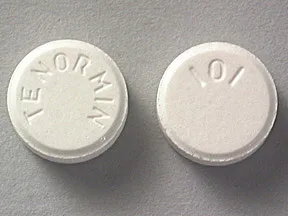 | |
| Tenormin oral - | 50 mg tablet | 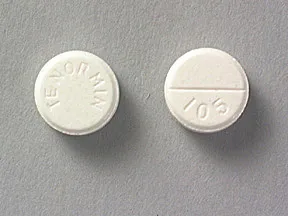 | |
| Tenormin oral - | 25 mg tablet | 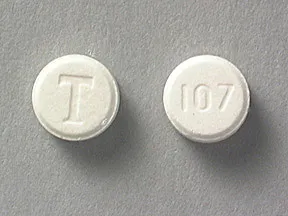 | |
| Atenolol - | 50 mg tablet | 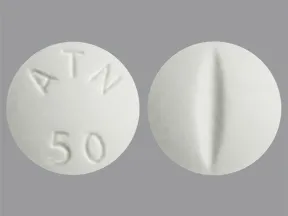 | |
| Atenolol - | 50 mg tablet | 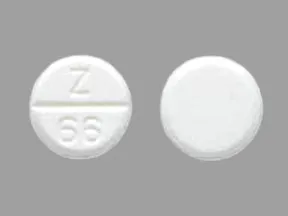 | |
| Atenolol - | 25 mg tablet | 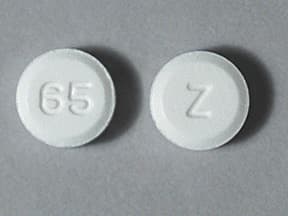 | |
| Atenolol - | 100 mg tablet | 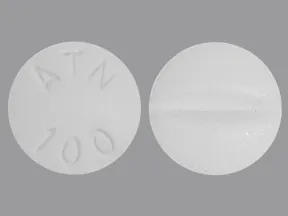 | |
| Atenolol - | 25 mg tablet | 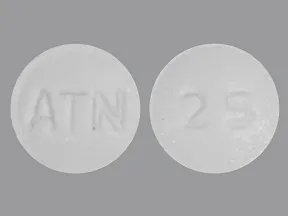 | |
| Atenolol - | 25 mg tablet |  | |
| Atenolol - | 100 mg tablet | 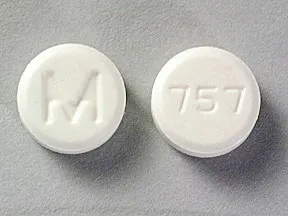 | |
| Atenolol - | 100 mg tablet | 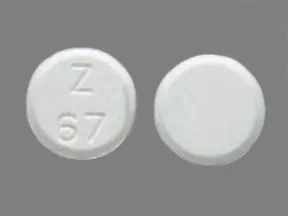 | |
| Atenolol - | 50 mg tablet | 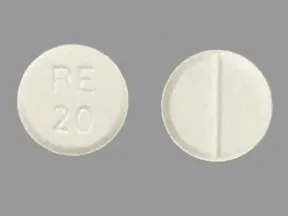 | |
| Atenolol - | 100 mg tablet | 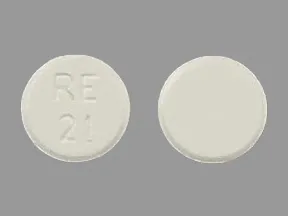 | |
| Atenolol - | 25 mg tablet | 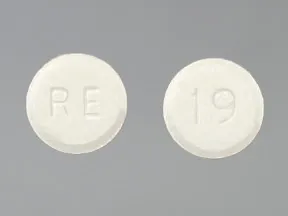 | |
| Atenolol - | 50 mg tablet | 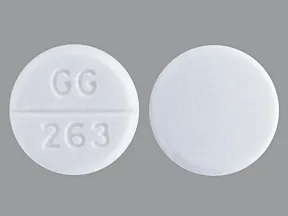 | |
| Atenolol - | 50 mg tablet | 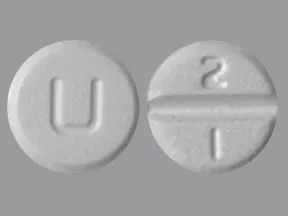 | |
| Atenolol - | 25 mg tablet | 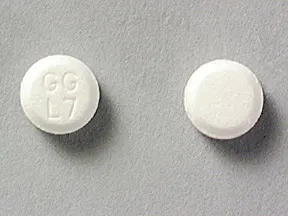 | |
| Atenolol - | 100 mg tablet | 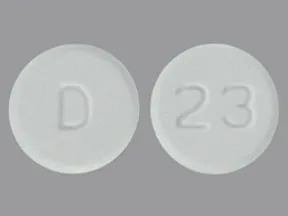 | |
| Atenolol - | 50 mg tablet | 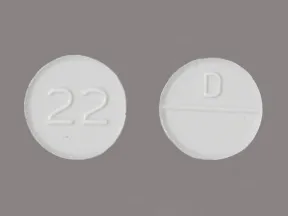 | |
| Atenolol - | 25 mg tablet |  | |
| Atenolol - | 25 mg tablet |  | |
| Atenolol - | 100 mg tablet | 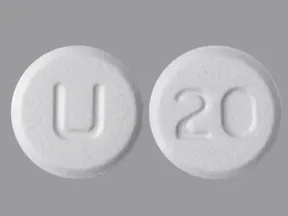 | |
| Atenolol - | 25 mg tablet | 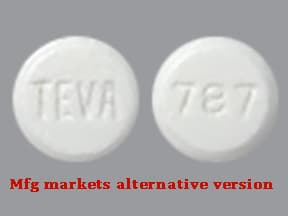 | |
| Atenolol - | 25 mg tablet | 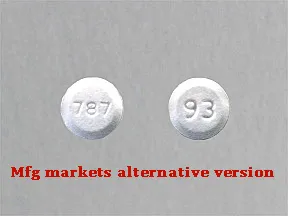 | |
| Atenolol - | 50 mg tablet | 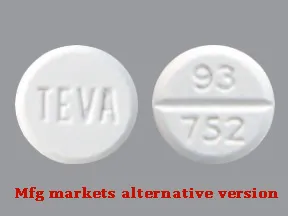 | |
| Atenolol - | 50 mg tablet | 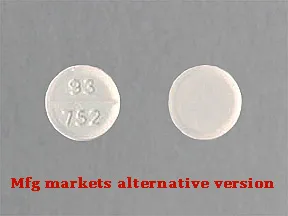 | |
| Atenolol - | 50 mg tablet | 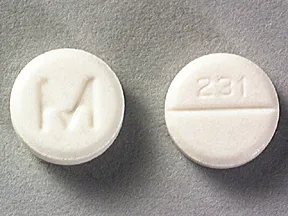 | |
| Atenolol - | 50 mg tablet | 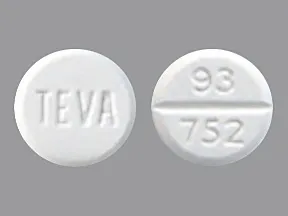 | |
| Atenolol - | 25 mg tablet | 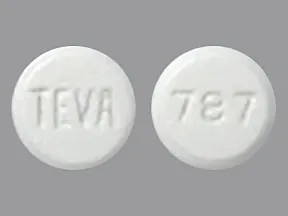 | |
| Atenolol - | 100 mg tablet | 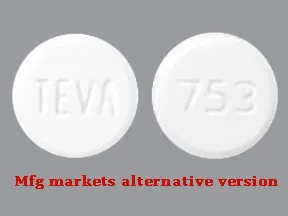 | |
| Atenolol - | 100 mg tablet | 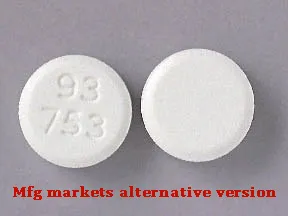 | |
| Atenolol - | 100 mg tablet | 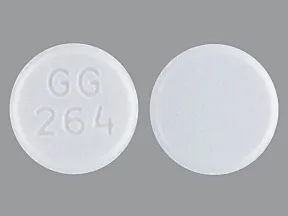 | |
| Atenolol - | 50 mg tablet | 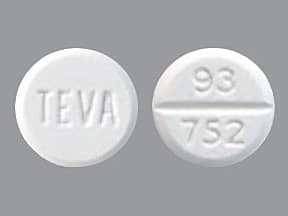 |
Copyright © 2010 First DataBank, Inc.
Patient Handout
Atenolol
COMMON BRAND NAME(S): Tenormin
USES: What is atenolol used for? Atenolol is commonly used for the following conditions. High blood pressure ( hypertension ) Chest pain in people with heart disease To reduce the risk of death in people after a heart attack Atenolol may also be used for other conditions as determined by your healthcare provider. How does atenolol work (mechanism of action)? Atenolol blocks beta-1 receptors in your heart. These receptors normally bind to hormones called catecholamines. When catecholamines bind to these receptors, it causes your heart to beat harder and faster. Blocking these receptors helps your heart beat more slowly. These effects can help reduce chest pain, lower blood pressure, and may reduce your risk for heart attack and stroke. How is atenolol supplied (dosage forms)? Atenolol is available as Tenormin and generic atenolol in the following dosage forms that are taken by mouth. 25 mg oral tablets 50 mg oral tablets 100 mg oral tablets How should I store atenolol? Atenolol should be stored at room temperature, between 68 F to 77 F (20 C to 25 C). It can be exposed to temperatures between 59 F to 86 F (15 C to 30 C), for shorter periods of time, such as when transporting it. Store in a cool, dry place, in a tightly closed container. Protect from light.
HOW TO USE: tablet that is swallowed
SIDE EFFECTS: What are the most common side effects of atenolol? The most common side effects of atenolol are listed below. Tell your healthcare provider if you have any of these side effects that bother you. Fatigue Dizziness Low blood pressure Slow heartbeat There may be other side effects of atenolol that are not listed here. Contact your healthcare provider if you think you are having a side effect of a medicine. In the U.S., you can report side effects to the FDA at www.fda.gov/medwatch or by calling 800-FDA-1088. In Canada, you can report side effects to Health Canada at www.health.gc.ca/medeffect or by calling 866-234-2345. What are the serious side effects of atenolol? While less common, the most serious side effects of atenolol are described below, along with what to do if they happen. New or Worsening Heart Failure. Atenolol may worsen existing heart failure or cause fluid buildup in your body. For individuals with underlying heart disease or heart damage, atenolol can potentially lead to heart failure over time. Tell your healthcare provider right away if you have any of the following symptoms. Shortness of breath or trouble breathing, especially while lying down Swelling in your feet, ankles, or legs Unusually fast weight gain Unusual tiredness Heart Rate Changes. Atenolol can make your heart beat slower than normal (bradycardia) . Call your healthcare provider right away if you have any of the following symptoms of bradycardia. Feeling lightheaded, dizziness, or fainting Confusion Feeling weak or easily tired Chest pain Shortness of breath Decreased Blood Pressure (Hypotension). Atenolol may cause low blood pressure . If you feel faint or dizzy, lie down. Tell your healthcare provider right away if you have any of the following symptoms of low blood pressure. Dizziness, feeling lightheaded, or fainting Confusion Feeling weak or tired Breathing Problems. Atenolol may cause the muscles around the airways to tighten ( bronchospasm ) instead of relaxing, which can be serious. Stop using atenolol and contact your healthcare provider right away if you have trouble breathing. Severe Allergic Reactions. Atenolol may cause allergic reactions , which can be serious. Stop using atenolol and get help right away if you have any of the following symptoms of a serious allergic reaction. Breathing problems or wheezing Racing heart Fever or general ill feeling Swollen lymph nodes Swelling of the face, lips, mouth, tongue, or throat Trouble swallowing or throat tightness Itching, skin rash, or pale red bumps on the skin called hives Nausea or vomiting Dizziness, feeling lightheaded, or fainting Stomach cramps Joint pain
PRECAUTIONS: Who should not use atenolol? Allergies to Ingredients. People who are allergic to any of the following should not use atenolol. Tenormin Atenolol Any of the ingredients in the specific product dispensed Your pharmacist can tell you all of the ingredients in the specific atenolol products they stock. Bradycardia. Atenolol should not be used if your heart is beating too slow (bradycardia). Heart Block. Atenolol should not be used if the electrical signals in your heart move too slow (heart block). Severe or Worsening Heart Failure. Atenolol should not be used if your heart failure is severe or getting worse, causing you to feel very tired, have trouble breathing, or swelling in your legs. Cardiogenic Shock. Atenolol should not be used if you have a life-threatening condition called cardiogenic shock where your heart cannot pump enough blood to the rest of your body. Untreated Pheochromocytoma. Atenolol should not be used in people with a certain type of adrenal gland tumor, called pheochromocytoma, if it is not being treated. What should I know about atenolol before using it? Do not take atenolol unless it has been prescribed to you by a healthcare provider. Take it as prescribed. Do not share atenolol with other people, even if they have the same condition as you. It may harm them. Keep atenolol out of the reach of children. Atenolol can affect your alertness or coordination. Do not drive or do other activities that require alertness or coordination until you know how atenolol affects you. Stopping atenolol suddenly may lead to chest pain, heart attack and death in people with heart disease. Do not stop taking this medication without talking to your healthcare provider first. What should I tell my healthcare provider before using atenolol? Tell your healthcare provider about all of your health conditions and any prescription or over-the-counter (OTC) medicines, vitamins/minerals, herbal products, and other supplements you are using. This will help them determine if atenolol is right for you. In particular, make sure that you discuss any of the following. Current and Past Health Conditions. Tell your healthcare provider if you have any of the following. Heart problems Breathing problems Kidney problems Thyroid problems Pheochromocytoma Diabetes. Acebutolol can decrease early signs of low blood sugar, such as fast heartbeat, and make it more likely for the low blood sugar to be serious, especially for people with diabetes. Pregnancy. Atenolol can cause harm to an unborn baby if taken during pregnancy. Tell your healthcare provider if you are or plan to become pregnant. If you become pregnant, contact your healthcare provider right away. Breastfeeding. Atenolol passes into breast milk. Tell your healthcare provider if you are breastfeeding or plan to breastfeed.
DRUG INTERACTIONS: Does atenolol interact with foods or drinks? There are no known interactions between atenolol and foods or drinks. It is unknown if drinking alcohol will affect atenolol. The risk of dizziness may be increased if you drink alcohol while taking atenolol. Does atenolol interact with other medicines (drug interactions)? Always tell your healthcare provider about any prescription or over-the-counter (OTC) medicines, vitamins/minerals, herbal products, and other supplements you are using. In particular, make sure that you discuss if you are using any of the following before taking atenolol. Diltiazem and verapamil, which are medicines used to treat chest pain and high blood pressure A nonsteroidal anti-inflammatory drug (NSAID), such as ibuprofen, naproxen, and others, which are contained in many prescription and OTC products for pain, swelling, and fever Digoxin (Lanoxin), which is a medicine used to treat irregular heartbeat and some types of heart failure Clonidine, which is a medicine used to treat high blood pressure and attention deficit hyperactivity disorder (ADHD) Any medicine for irregular heart rate or rhythm Any medicine for high blood pressure Any medicine for diabetes
OVERDOSE: What should I do if I accidentally use too much atenolol? If you or someone else has used too much atenolol, get medical help right away, call 911, or contact a Poison Control center at 800-222-1222. What should I do if I miss a dose of atenolol? If you miss a dose, take it as soon as you remember. If it is almost time for your next dose, skip the missed dose and only take the next dose. Do not take double or extra doses.
Formulary
Adding plans allows you to compare formulary status to other drugs in the same class.
To view formulary information first create a list of plans. Your list will be saved and can be edited at any time.
Adding plans allows you to:
- View the formulary and any restrictions for each plan.
- Manage and view all your plans together – even plans in different states.
- Compare formulary status to other drugs in the same class.
- Access your plan list on any device – mobile or desktop.




